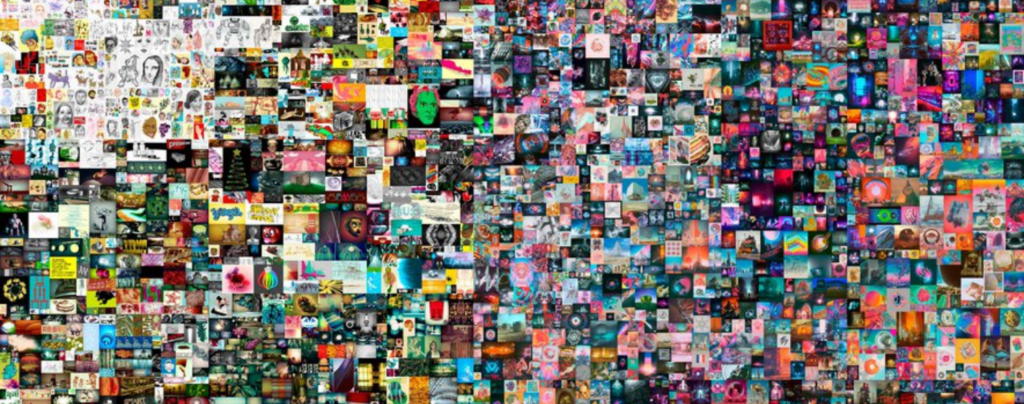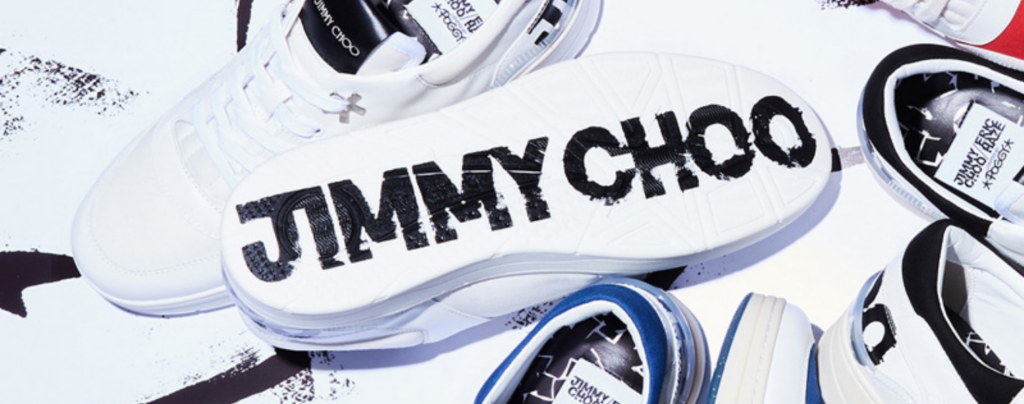We use cookies to improve your experience. By continuing to use this website you agree to our cookie policy.

NFTs (Non-Fungible Tokens) usually leave people amidst a feeling of foreign wonder, particularly considering the talk of blockchain news wasn’t quite as mainstream two years ago. The information of Jeff Koons and David Hockney selling the most gainful auction for a piece of art just took place in 2021, and it was for a work that existed only in a JPEG file format. The artist Beeple’s “Everyday’s—The First 5,000 Days” Where a series of Christie’s works sold at Christie’s for the impressive sum of $69.3 million. This news jolted half the globe with an NFT craze but left the other half still wondering what these digital assets are, if the NFT craze is here to stay for the future, what is its actual practical use and what could it mean in the near future, for art and retail sectors?
Art NFTs Future
NFTs are non-fungible. As opposed to Bitcoin, each token of NFT is unique and provides the buyer of the digital asset comprehensive ownership of it via the internet. This powerful method transforms how digital art can be made exclusive.
Art collectors and buyers can wholly own a piece of artwork online, no matter how many views and download the work gets. This means there’s no such fake possession of digital art in the world of NFTs, which used to be impossible.
The future of NFTs could be a money machine on the horizon for digital art sellers developing the pocket size of creators worldwide or a one minute trend. Predictions say that this trend may take over the internet; it’s undoubtedly transformed how artists and creators earn a living while shifting how we, the public, and buyers relate to art and consume it.
“NFTs are so prevalent in art because digitally native creators can bestow scarcity on works that consist entirely of pixels. They enable creators to earn more than they would outside the restrictions of the fine art artwork’s, creators typically only get paid when they initially sell a piece of artwork; should the artwork’s new owner sell it to someone else, they pocket any gains made—and the artist gets nothing. However, NFTs use intelligent contracts to verify ownership and terms.” – Doyle at Christie’s
The future of NFT art sees a more accessible, faster and more self-catered approach than the traditional art model, which demands students to graduate from art school and increase their prospects of success through third-party support like galleries, shows and exhibitions. According to contemporary art specialist and NFT art representative Leighanne Murray, only a few artists reach the top of the pyramid. Even if they do, success comes at a price. Art galleries often take a 50% commission on each sale, she says. Many have exclusivity contracts.
One of the main reasons NFT artworks will make it far in the future is because they offer an alternative. No matter the level of expertise or the type of artist, any creator can bag themselves an NFT. The model is simple in the digital world, where you can set your own prices utilizing exclusive NFT online marketplaces. The marketing is all down to the artist too, where social media holds the most powerful currency.
It isn’t just a future for the artists, but the buyers too. Buyers are finding it easier to store, transfer and claim artworks more than ever before.
Museums and galleries are using NFTs as a way to expand online selling, and it’s bringing youth back to the industry. More artists are becoming recognized for their works, and it’s giving every creator a chance to earn in a much simpler yet gen-z appropriate way.
In conclusion, the selling of crypto or NFT art can reconstruct the whole creative sector; its introduction is merely the start of something that future generations will consider ordinary.
NFTs Future for Fashion
Since recent news hit that luxury brand Dolce & Gabbana set a $6 million record for fashion NFTs, profound head-scratching moments took place in the fashion industry. Could this perhaps be a bright future for the retail world?

This NFT trend has tied itself to the established fashion world, which like NFTs, is considerably trend-based. However, once you forget the ideology of NFTs just being a moment, there are some enhancements to the industry that NFTs could give. NFTs could significantly reduce fast fashion waste and give people the exciting opportunity to wear digital clothing and eternally be on-trend.
The crypto fashion that does exist, according to High Snobiety, relies heavily on a couple of factors, such as its link to gaming and COVID. However, when we look back at the pre-pandemic times, people were still dressing to impress just for the likes of Tiktok and Instagram, returning clothes to stores thereafter.
“NFTs are all about collectables, and so is the fashion world,” says Benoit Pagotto, founder of RTFKT (pronounced “artefact”). “Fashion brands just need to look and see where their fans have a collector’s mindset already, and they can leverage NFTs to unlock new ways of creating products and generating revenue.” That doesn’t mean there needs to be a mad dash to minting NFTS, he adds. “Brands shouldn’t create NFTs because they have FOMO or want to be in the press. They need to consider their long-term vision and build towards the future.”
In the luxury fashion world, sneakers are one of the first products to adopt NFTs. Brands like Gucci are launching their own NFTs, and it’s getting more advanced as time goes on. The mindset on virtual clothing is rapidly changing as Gen-Z transforms the luxury market. The future seems bright for fashion NFTs because it’s not unusual to be sharing Instagram pictures in your digital clothes. Just lately released is the NFT collection of global luxury fashion brand Jimmy Choo. The brand partnered with New York artist Eric Haze to auction a digital pair of sneakers, having the highest bidder win a real version and NFT version.

The customer who acquires luxury goods is not buying based on necessity. The sense of being a part of a luxury culture and brand is precisely what the customer is buying. NFTs sit soaring with investors and traders, and luxury buyers will be no different.
The future of NFTs will possibly be combined with virtual and augmented reality. Soon, you will be able to view your rare collector piece like Raf Simons’ parka in your own house, says digital award winner Mirjana Perkovic. “The key angle for brands here is to establish a new world of sales engagement and digital interaction with customers. New items can increase customer loyalty. One-off experiences and unique moments in time can now be captured, exchanged and treasured, which all brands could use to establish a much more permanent tie with their clients. Ephemeral items fade away, but a collector piece is a much stronger tie to a specific brand.”
While a sense of practicality of NFTs is being called into question, it is clear that VR could provide some of the answers collectors are after. Displaying one’s digital art piece or limited-edition fashion item does require a virtual space, replacing one’s closet or at-home display, and technology will allow those digital fans for exactly that; with new virtual spaces that transcend the limitation of the physical world, allowing collectors to share, exchange and exhibit those ever-so-valuable digital assets.
In conclusion, the NFT future looks bright for both art and fashion. The digital world is only getting started, and it’s great to observe how convenient and eco-friendly it’s all becoming. What will be the next record-breaking digital sale?
